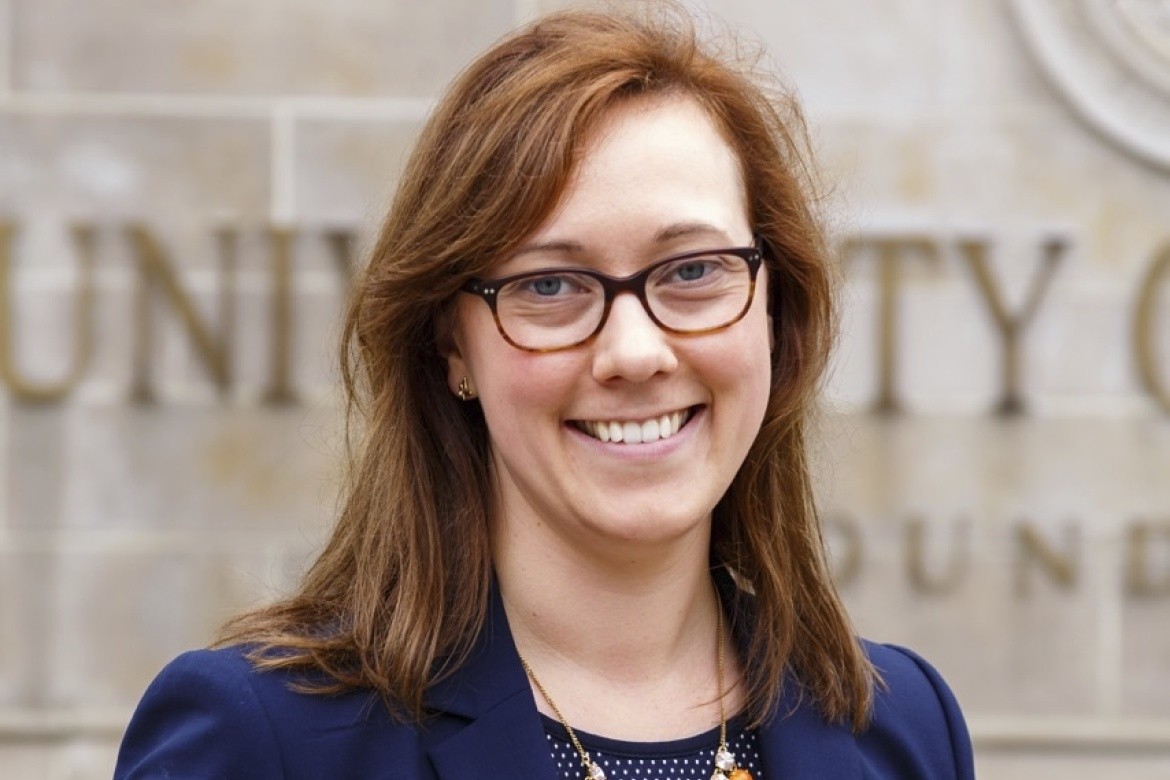Through the heart of a new day’s endeavor

"A realistic, optimistic, mindset while navigating the journey is essential to building relationships in any art history career."
Academic focus: art history and medieval studies double major
Thesis: Mariology and Monumental Sculpture on the West Façade of Notre-Dame Cathedral, Paris
Advanced degrees: Ph.D., History of art and architecture, University of Pittsburgh
Nearly a decade ago, Professor Frederick J. McGinness chanted, in rhythmic precision, the litany of the graduates for the class of 2007. It was my turn to walk across the stage, greet President Joanne V. Creighton, receive my degree, and wave at my cheering family. Looking back, I remember sitting (luckily on the shady side of Gattell Amphitheater!), surrounded by my fellow sphinxes, in awe of the moment, and thinking how empowered I felt to have overcome the whirlwind journey of sleepless nights, the challenge of a seemingly endless senior thesis, and the stress of figuring out which direction to go (graduate school, museum studies, non-profit work?) as I took my first steps “beyond the gates.”
That fall, I started as a graduate student in the History of Art and Architecture department at the University of Pittsburgh. Professor Michael Davis did an excellent job supervising my undergraduate thesis and preparing me for the rigor of a combined M.A./Ph.D. program.
When I started at Pitt, I thought I had it all figured out. I knew I wanted to study art history and become a professor. Seemed simple enough, all I had to do was: go to grad school (check); take four years of additional coursework (check); pass two language exams (check); write a Masters’ thesis (check); study for my comprehensive exams, propose a prospectus for a dissertation, and be passed to candidacy (check, check, check); apply and receive funding for research (check, check); attend and present at graduate and professional conferences (check); intern at accredited museums (check); publish! (I’m still working on this one); write a dissertation that no one else has written (biggest check of all!); apply and keep applying for a very rigorous and competitive job market filled with many talented people who are all looking to land their dream job. While this is the outline of my academic career over the last nine years, the path to achieving all of these things was by no means as straightforward. In fact, it was much more roundabout than most academic journeys.
In light of this fact, I would like to remind my fellow Mount Holyoke students/graduates that no matter the path, whether straightforward or curvilinear, it is not the path itself that measures success, but rather your own perspective, outlook, and attitude toward the path. Maintaining a realistic, as well as optimistic, mindset while navigating the journey is essential to building relationships in any career – art history included.
Courtney Skipton Long received her BA in art history and medieval studies from Mount Holyoke College in 2007 and her Masters degree with an Advanced Certificate in Medieval and Renaissance Studies from the University of Pittsburgh in 2009. In April 2016, Courtney received her Ph.D. from the Department of History of Art and Architecture at the University of Pittsburgh, where her dissertation is entitled “Re-Categorizing Great Britain’s Medieval Architecture: A Lesson in Nineteenth-Century Visual Taxonomy.” Courtney accepted a position at the Bruce Museum for the 2016-17 academic year.